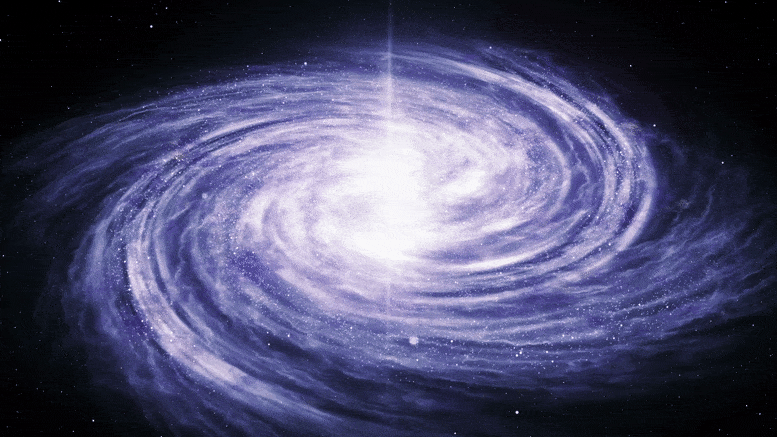
The invisible halo that surrounds and permeates a galaxy or galaxy cluster is known as a dark matter halo.
A University of California, Riverside physicist explains.
In a study co-led by physicists at the University of California, Riverside and the University of California, Irvine, it was discovered that the dark matter halos of ultra-diffuse galaxies are very odd, raising questions about the current understanding of galaxy formation and the universe’s structure.
The name “ultra-diffuse galaxies” refers to their exceedingly low luminosity. When compared to “normal” galaxies of comparable mass, the distribution of baryons — gas and stars — in ultra-diffuse galaxies is significantly more spread out.
In the following Q&A, Hai-Bo Yu, an associate professor of physics and astronomy at UCR, discusses the findings he and UCI’s Manoj Kaplinghat, a long-term colleague of Yu’s, published in The Astrophysical Journal regarding newly found ultra-diffuse galaxies and their dark matter halos.
Demao Kong of Tufts University, as well as Filippo Fraternali and Pavel E. Mancera Pia of the University of Groningen in the Netherlands, collaborated with Yu and Kaplinghat on the study. Kong, the first author, will join UCR this fall.
Q. What is a dark matter halo?
A dark matter halo is the halo of invisible matter that permeates and surrounds a galaxy or a cluster of galaxies. Although dark matter has never been detected in laboratories, physicists are confident dark matter, which makes up 85% of the universe’s matter, exists.
Q. You’ve found dark matter halos of the ultra-diffuse galaxies are very odd. What is odd about them and what are you comparing them to?
The ultra-diffuse galaxies we studied are much less massive compared to, say, the Milky Way. They contain a lot of gas, however, and they have much higher gas mass than total stellar mass, which is opposite to what we see in the Milky Way. The ultra-diffuse galaxies also have large sizes.
The distribution of dark matter in these galaxies can be inferred from the motion of gas particles. What really surprises us is that the presence of baryonic matter itself, predominantly in the form of gas, is nearly sufficient to explain the measured velocity of gas particles and leaves little room for dark matter in the inner regions, where most of the stars and gas are located.
This is very surprising because, in the case of normal galaxies, whose masses are similar to those of ultra-diffuse galaxies, it’s the opposite: dark matter dominates over baryonic matter. To accommodate this result, we conclude that these dark matter halos must have much lower “concentrations.” That is, they contain much less mass in their inner regions, compared to those of normal galaxies. In this sense, dark matter halos of the ultra-diffuse galaxies are “odd.”
At first glance, one would expect that such low-concentration halos are so rare that the ultra-diffuse galaxies would not even exist. After looking into the data from state-of-the-art numerical simulations of cosmic structure formation, however, we found the population of low-concentration halos is higher than the expectation.
Q. What was involved in doing the study?
This is a collaborative work. Filippo Fraternali and his student Pavel E. Mancera Piña are experts on the gas dynamics of galaxies. They discovered that ultra-diffuse galaxies rotate more slowly than normal galaxies with similar masses. We worked together to interpret measurement data of the gas motion of these galaxies and infer their dark matter distribution. Furthermore, we analyzed data from simulations of cosmic structure formation and identified dark matter halos that have similar properties as those inferred from the ultra-diffuse galaxies.
Q. Your findings raise questions about our understanding of galaxy formation/structure formation of the universe. How?
We have many questions regarding the formation and evolution of these newly discovered galaxies. For example, ultra-diffuse galaxies contain a lot of gas and we do not know how this gas is retained during galaxy formation. Further, our results indicate that these galaxies may be younger than normal galaxies. The formation of the ultra-diffuse galaxies is not well understood, and more work is needed.
Q. What makes ultra-diffuse galaxies so interesting?
These are amazing objects to study because of their surprising properties, as discussed in our work. The newly discovered ultra-diffuse galaxies provide a new window for further testing our understanding of galaxy formation, probably even the nature of dark matter.
Reference: “The Odd Dark Matter Halos of Isolated Gas-rich Ultradiffuse Galaxies” by Demao Kong, Manoj Kaplinghat, Hai-Bo Yu, Filippo Fraternali and Pavel E. Mancera Piña, 12 September 2022, The Astrophysical Journal.
DOI: 10.3847/1538-4357/ac8875
The study was funded by the National Science Foundation, the United States Department of Energy, the John Templeton Foundation, and NASA.

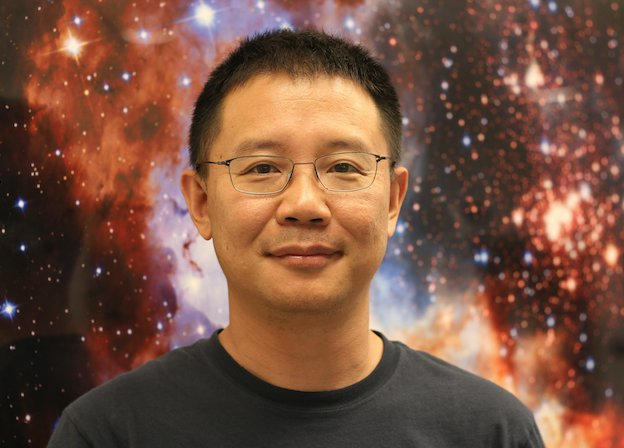
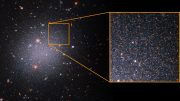
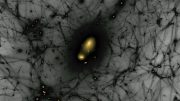
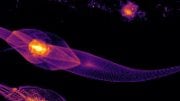
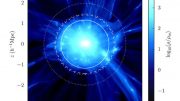
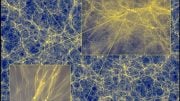
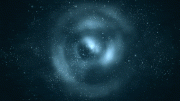
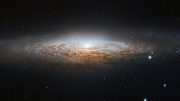

Since very few ultra-diffuse galaxies have been found, enough real data is not available about them. The Dark Matter conclusions in this article seem to be mostly from computer simulations.
Another possibility, from a view of String Theory, is that Dark Matter appears to us as an effect of string/anti-string annihilations. As you may know, quantum mechanics requires that strings must be formed as pairs in the quantum foam – a string and an anti-string – that immediately annihilate each other. Quantum mechanics also requires both the string and anti-string to be surrounded by “jitters” that reduce their monstrous vibrating energies. What if this jitter remains for a fraction of an instant after their string/anti-string annihilations? This temporary jitter would be seen by us as matter, via E=mc2, for that instant before it too returns to the foam. That’s why we never see it – the “mass” lasts only for that instant but is repeated over and over and over, all over. Specifics on this can be found by searching YouTube for “Dark Matter – A String Theory Way”